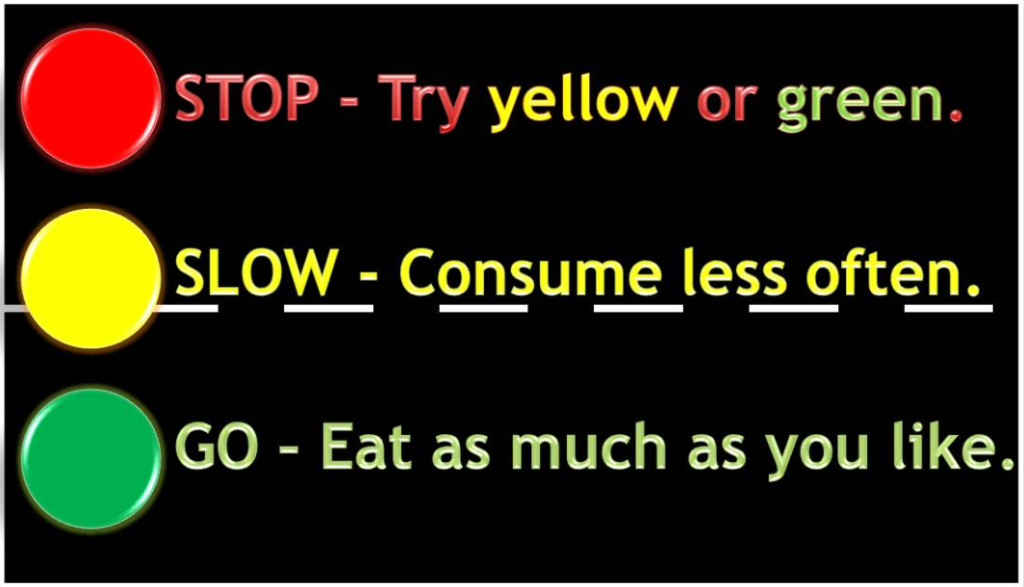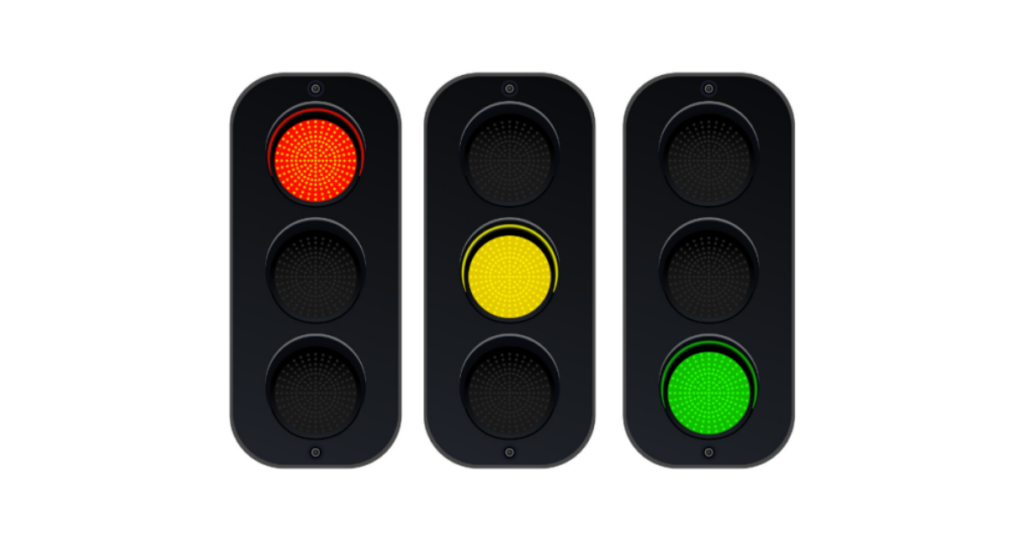The healthiest people we know aren’t flawless models of perfection. Actually, you might find their eating habits quite surprising. This is because, rather than sticking to someone else’s dietary recommendations, they’ve created a personalized food list that aligns with their unique dietary preferences.
They consider both taste preferences and how food affects them, allowing room for indulgences, and it’s an effective method. It promotes a healthy, enjoyable, and controlled approach to eating without feeling deprived. This approach is accessible to everyone and has been used successfully with over 100,000 clients for more than a decade.
Let’s talk about the traffic light eating method. If you don’t like the name or think it’s too strict, don’t click away just yet. Some companies have a similar-sounding approach with strict food rules for everyone, which can be controversial.
With our system, you’ll create your own categories of “green light,” “yellow light,” and “red light” foods based on what suits you best, and just so you know, “red light” doesn’t mean they’re bad. It’s not just about nutrition quality; your personal preferences, habits, goals, and how your body reacts also matter in this process.

Green light foods = anytime, anywhere foods
These are the foods you regularly and comfortably enjoy. You can consume them at a normal pace and in sensible portions. This list is primarily comprised of whole foods, but it may also include items you eat purely for enjoyment in amounts that suit you. Nutrient density is important, but your “green lights” are foods that bring you pleasure, align with your lifestyle, and make you feel good physically or mentally. These foods don’t require much thought – you simply savor them without overthinking.
Yellow light foods = “sometimes” / “maybe” / “small doses” foods
Your “yellow light” foods are ones you eat occasionally, with some care and thought. They might disagree with your stomach, but they’re not a big emergency. You might prefer to have them in small amounts or only on special occasions, like when you’re out with friends. It’s important to know that yellow-light foods aren’t necessarily “problem” foods. They can include nutritious options you eat from time to time. For example, you might not be a huge fan of eggplant, but you’ll have it when your partner makes it or when it’s part of a restaurant meal. Or you eat tofu once a week for “meatless Mondays.” These can be any kind of food, from certain “junk foods” to healthier options like kale.
Red light foods are the ones you usually steer clear of or limit.
Red light foods aren’t necessarily bad; they’re just foods you choose not to eat often. These foods might not be suitable for you because:
They don’t align with your goals, you tend to overindulge in them, you have allergies to them, they’re hard to digest, or you simply dislike them.
Ultra-processed foods often fall into this group because many people struggle to stop once they start eating them. Some call them “trigger foods” because a single bite can lead to a couch covered in Cheeto dust and empty ice cream cartons. However, it doesn’t mean you must avoid these foods entirely. For instance, you might not stock cheesecake in your freezer, but you’ll happily savor a big slice on a special occasion. On the other hand, even “healthy” foods can make it to the red light list. If broccoli is a no-go for you, putting it on the red light list is perfectly fine. After all, who wants to eat foods they can’t stand?
If eating apples gives you hives, consider it a red light food. And if plain, baked chicken breast makes you feel like you’re on a strict diet, that’s another red light item. Remember, placing something on your red light list doesn’t mean you can never have it again. Unless you have severe allergies, it’s worth trying them occasionally. You might develop a taste for something you currently dislike or learn to enjoy it in moderation.
Hold up: Couldn’t the traffic light system promote shame, guilt, or disordered habits?
It all comes down to how you apply it. The PN traffic light system isn’t about categorizing foods or adhering to a rigid system flawlessly. Instead, it’s designed to help you understand which foods suit you and which ones might not. This way, you can make informed choices that align with your preferences.
However, not every traffic light system is the same.

Some other programs also use the traffic light system, but they apply it in a different way than PN. They mainly consider the nutritional value of foods to determine which ones you should eat most (green), eat moderately (yellow), and eat sparingly in small amounts (red). Moreover, their list is the same for everyone.
In contrast, our approach is distinct for a couple of reasons. First, we avoid labeling foods as “bad” or forbidden.
Based on what we’ve observed and learned from working with clients, limiting food choices often results in more challenging eating habits, not fewer. While we do provide resources to guide people toward healthier options, our primary goal is to assist clients in making changes that align with their preferences. Additionally, when employed as a tool for increasing awareness, the traffic light eating method can actually help individuals reduce unhealthy eating habits and feel more confident, adaptable, and content with their food decisions.
This can feel life-changing.
Once you understand which foods suit you, which ones are just okay, and which ones create problems, making food choices becomes simpler. The best part is that you can adjust your traffic lights whenever you like, and they grow with you. Even better, your decisions are tailored to you – your body, mind, and health – not someone else’s diet, meal plan, points, or regulations. Your dietary choices become less rigid and more adaptable, making food less stressful, not more.


